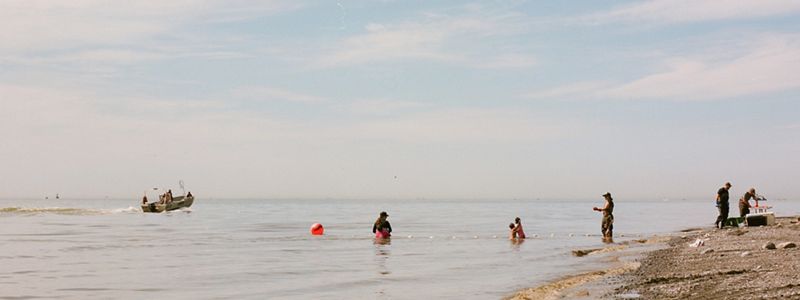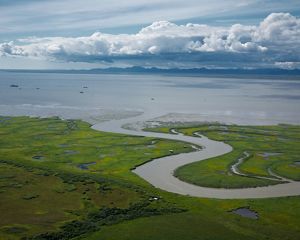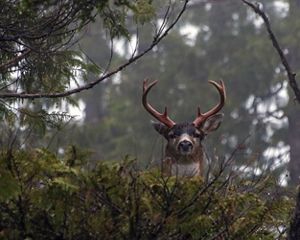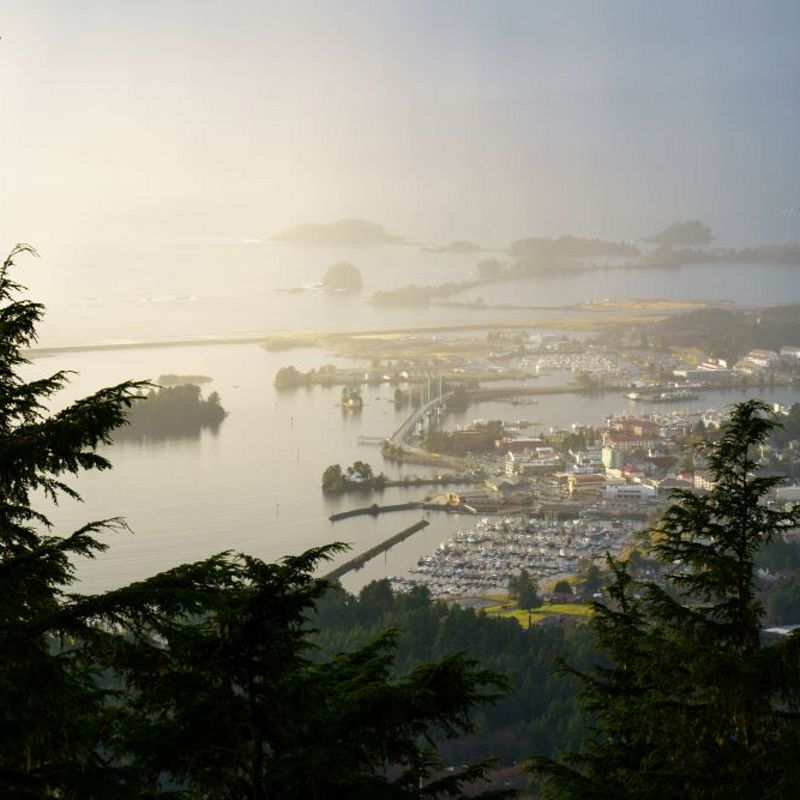
Policy Priorities in Alaska
We’re working for meaningful solutions across aisles, across sectors, across borders and across Alaska.
Explore our view on important issues in the 49th State.
Rigorous science. Practical. Nonpartisan.
Learn More About Our Work
We work across borders and across sectors to protect the lands and waters on which all life depends. We stand committed to a nonpartisan approach.
Local partnerships in Alaska bring us all closer to a world where nature and people thrive together.
Alaska is on the frontlines of climate change. This is a reality that Alaskans, particularly rural Alaskans and Indigenous Peoples, know through lived experience. Change is real and visible in locales all across Alaska. Thawing permafrost, extreme weather events, fish and wildlife losses and a variety of dramatic changes to our lands and waters all combine to threaten long-standing traditions, local economies and food security. Alaskans are experiencing and adapting to a changing climate and its ramifications at breakneck speed. These changes require communities to prepare for the future, to work toward sustainability and to find solutions to these new challenges.
All of Alaska awaits our best efforts at coming together to find solutions today.
We focus on three main areas
-
Climate Solutions
The growing risk from threats like increasingly powerful storm events and uncontrollable wildfire underscores the urgency for helping Alaska communities prepare for change, protect natural carbon storehouses like forests and transition to renewable energy. Read about our climate work
-
Sustainable Fisheries
Alaska’s vibrant fisheries support livelihoods, local economies and valuable traditions. Healthy fisheries and the healthy lands and waters that sustain them are the basis of treasured ways of life. Read about our fisheries work
-
Thriving Communities
Indigenous Peoples in Alaska have stewarded lands and waters since time immemorial. The best and most lasting efforts to support communities and care for Alaska’s forests, streams and coastlines honor and strengthen this legacy. Read about our work with communities
FACTS
-
229
federally recognized Tribes in Alaska and Alaska Native people make up nearly one-fifth of Alaska’s population.
-
>1%
of land in Alaska is privately held; 61% is federal, 26% is state and 12% is owned by Alaska Native corporations.
-
2/3
of U.S. wild-caught seafood comes from Alaskan waters.
-
< 50%
Alaska possesses more than 50% of total U.S. natural carbon storage.
-
40%
Alaska lakes and rivers contain 40% of United States freshwater.
Climate Solutions
Public policy drives our climate program in Alaska. Guided by science and partnerships, we seek to speed the transition to renewables, build Alaska’s energy independence and resilience, inform public processes, advocate for equitable outcomes in policy and educate the public.
Some examples of our work include:
- Lending crucial support to legislation that resulted in Alaska’s first Green Bank, which will support the development renewable-energy infrastructure in Alaska
- Supporting increased investments in renewable energy infrastructure through the Bipartisan Infrastructure Law at the federal level and the Renewable Energy Fund at the state level;
- Educating the public and federal and state lawmakers about climate impacts through the Alaska Climate Opportunity Assessment;
- Providing informational resources and best practices via state and federal public comments to improve public processes around climate programs.
Sustainable Fisheries
The Nature Conservancy supports Alaska’s fishing families through our work to protect Bristol Bay lands and waters; improve equitable access to commercial fishing opportunities for rural and Indigenous fishing families and communities; and influence federal policy to be more inclusive of Alaska’s unique fisheries, waterway improvements and restoration, and increased funding for science.
Some examples include:
- Researching solutions for the outmigration of commercial fishing permits from rural communities in Bristol Bay;
- Following the lead of Tribes to advocate for permanent protections for Alaska’s Bristol Bay headwaters;
- Encouraging NOAA fisheries policy to incorporate Indigenous knowledge and community-driven research priorities and invest in improving relationships with Alaska Native communities.
Resilient Communities
The Nature Conservancy in Alaska works in close partnership with communities throughout Southeast Alaska and Bristol Bay to create outcomes that are durable and equitable. Across Alaska, we know that stewarding the environment must serve the community in order to be a meaningful solution. This means ensuring our policy work is grounded in the unique context of Alaska and that community needs are reflected in our advocacy. Often, this means finding opportunities to support economic-development-friendly conservation, encouraging people-centric solutions and influencing improved place-specific resource management.
Some examples include:
- Lowering barriers to entry for the young-growth timber industry by supporting state legislation for lumber grading standards that better serve Alaskans;
- Influencing implementation of the Forest Service’s Southeast Alaska Sustainability Strategy to include projects prioritized by community partners in Southeast Alaska;
- Advocating for improvements in the Farm Bill, including improving federal funding for programs that have been important to creating jobs, supporting locally led stewardship and encouraging sustainable management in Alaska like the Regional Conservation Partnership Program (RCPP) and the Environmental Quality Incentives Program (EQIP).
Resources
Policy Goals
-
Sustaining healthy lands and waters that support Alaska’s unique communities is the foundation of The Nature Conservancy’s commitment to our state’s economy, security and ways of life.
FACT SHEET: Policy Priorities in Alaska
Publications
-
This series of four reports explore Alaska’s unique opportunities to address climate change and assess the economic and political implications of recent, current and future investments and policies. These reports cover Alaska’s renewable energy economy, climate-resilient housing and infrastructure across the state and natural climate solutions.
- REPORT: Renewable Energy Economy
- REPORT: Resilient Homes
- REPORT: Resilient Communities
- REPORT: Natural Climate Solutions in Alaska
-
A risk assessment is a process drawing on tools from across disciplines to consider and identify potential hazards to a large system. This interdisciplinary review of the ecological risk posed by large-scale mining in the headwaters of Bristol Bay in Southwest Alaska provides a peer-reviewed perspective of the potential risks to wild salmon systems.
REPORT: An Assessment of Ecological Risk to Wild Salmon Systems from Large-scale Mining in the Nushagak and Kvichak Watersheds of the Bristol Bay Basin. Source: The Nature Conservancy
REPORT: SYNTHESIS—A Preliminary Framework for Assessment of Ecological Risk to Wild Salmon from Large-scale Mining in Bristol Bay, Alaska. Source: The Nature Conservancy
-
Peer-reviewed research published in the journal Forest Ecology and Management employs big data and machine learning to model how and where deer move through the forest—and explores implications for the future choices in forest management. This forest research is explored also in Cool Green Science, TNC’s science blog.
REPORT: Using LiDAR and Random Forest to improve Deer Habitat Models in a Managed Forest Landscape
-
As Alaska focuses on energy diversification, green banks show promise as an important tool to help overcome financing challenges many Alaska energy projects face.
REPORT: Energy Financing in Alaska: Opportunity for a Statewide Green Bank
-
Our “Righting the Ship” report offers a timely analysis on the performance of Alaska’s Limited Entry System on its 50-year anniversary in Bristol Bay and across the state.
REPORT: Righting the Ship: Restoring Local Fishing Access and Opportunity in Bristol Bay Salmon Fisheries
-
Gulf of Alaska Fisheries Limitation Study. Read the report HERE
-
Read the publication HERE
Advocacy
-
The Nature Conservancy in Alaska supports efforts to right the injustice of exclusion for the five landless Alaska Native communities in Southeast Alaska.
LETTER: Support for the “Unrecognized Southeast Alaska Native Communities Recognition and Compensation Act”
-
The Nature Conservancy in Alaska believes that using locally sourced building materials from local sawmills for construction is a critical component of community sustainability.
LETTER: Support for Local Sawmills and Alaska Lumber Grading Legislation
-
Read the report HERE
-
Read the comments HERE
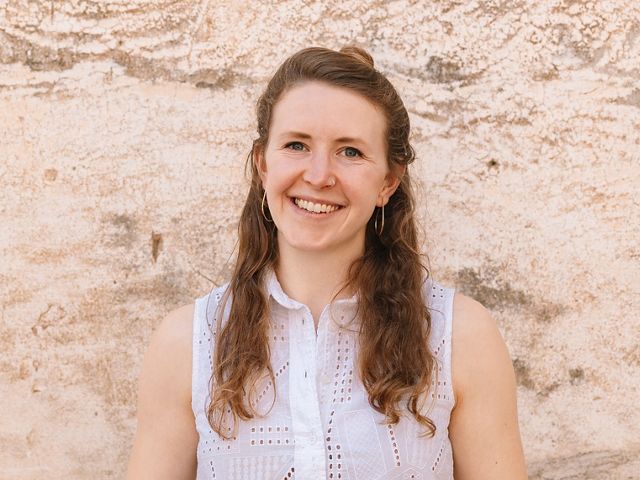
Contact Us
Kelsey Schober, Director of Government Affairs
Email: kelsey.schober@tnc.org
Latest News in Alaska
Sign up to receive monthly conservation news and updates from Alaska Get a preview of Alaska’s Nature News email.
